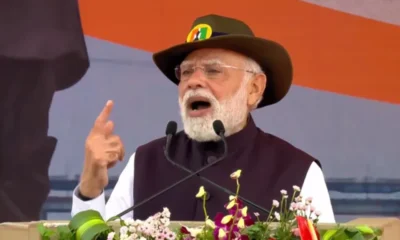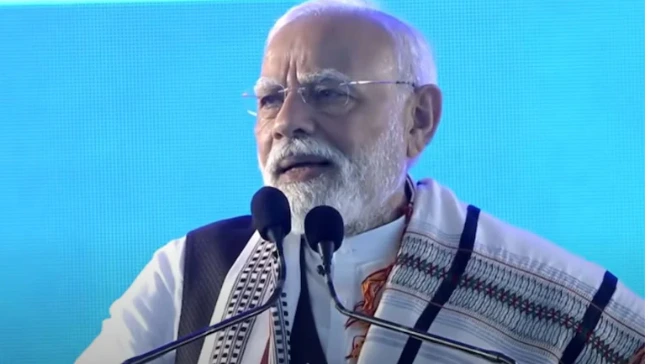[vc_row][vc_column][vc_column_text]
Over 1.1 crore jobs were lost in 2018, while investments in new projects in the bygone year fell to the lowest level in the last fourteen years, say media reports citing data from the Centre For Monitoring Indian Economy (CMIE), a think tank that tracks business and economic data.
Reflecting a dismal ground reality, these critical reports – ‘unflattering’ would be a mild term – knock the bottom out of the bluster of Narendra Modi government’s campaign claiming to take India and Indians to new heights and blaming Congress and other parties for all that is wrong in the country.
On job scenario, the CMIE analysis report, according to Business Today, showed that the number of unemployed has been steadily increasing in the country. The number of employed recorded in December 2018 was at 397 million, which is 10.9 million less than the figure of 407.9 million seen a year ago at the end of December 2017.
While people in both rural and urban India have been hit, most of the jobs losses were reported from former region. “An estimated 9.1 million jobs were lost in rural India while the loss in urban India was 1.8 million jobs. Rural India accounts for two-thirds of India’s population, but it accounted for 84 per cent of the job losses,” the report stated.
People in the 40-59 years age groups kept their jobs, while all other age groups saw jobs shrinking, the report said.
Around 3.7 million salaried employees lost jobs in 2018.
It also showed that individuals belonging to vulnerable groups were the worst hit by job losses in 2018.
Job losses were concentrated among the uneducated, as well as wage labourers, agricultural labourers and small traders. The latter three were also the worst affected in terms of employment during the aftermath of demonetisation.
Women were significantly impacted by job losses during 2018, where out of the 11 million jobs lost, women accounted for 8.8 million jobs whereas men lost only 2.2 million jobs. Around 6.5 million rural women lost their jobs, whereas the figure for urban women was at 2.3 million. Men on the other hand were not as affected by the job losses. Urban men gained 5,00,000 jobs, whereas rural men lost 2.3 million jobs, the CMIE report said.
“So, the break-down of employment statistics by the various attributes of respondents discussed above tells us that a person who lost the job in 2018 mostly fits a profile like – is a woman, particularly a woman in rural India, is uneducated and is engaged as a wage labourer or a farm labourer or is a small-scale trader and is aged either less than 40 years or more than 60 years,” the report said.
“India’s unemployment rate shot up to 7.4 percent in December 2018. This is the highest unemployment rate we’ve seen in 15 months. The rate has increased sharply from the 6.6 per cent clocked in November,” the report said.
While employment estimates have been volatile between September and December, when month-over-month employment estimates have increased or declined by 5-7 million, the overall trend has shown a steep decline. The marginal decline seen in November was possibly an aberration in a trend that indicates towards a steady decline in jobs.
The report stated that this analysis, however, is only a preliminary insight into the job scenario during the months of September to December, and are bound to have a margin for error which will be eliminated in further studies over next couple of months.
Another CMIE analysis said investments in the just-ended December quarter fell to a 14-year-low. Indian companies announced new projects worth Rs 1 trillion in the December quarter, 53% lower than what was announced in September quarter, and 55% lower than the year-ago period.
Project additions, measured by total private and public investments in the country, fell in the quarter to Rs1.15 lakh crore (around $16.5 billion), compared to over Rs 2.23 lakh crore in the same period last year.
Though this is a 14-year low, the CMIE said since some of the data comes with a lag, it is likely to be revised upwards slightly next month to possibly around Rs1.40 lakh crore – still the lowest in over a decade, reported Quartz.
Tepid demand, a gradual decline in investments, and a changing macroeconomic environment have drawn down fresh investments. “Capacity utilisation has been below 75%, lower than what is required to spur new investments. Overall, there had been a steady decline in the past three years which ends up adding up to be a lot,” Mahesh Vyas, CEO of CMIE, told Quartz.
Moreover, while Modi’s electoral promise in 2014 included kick-starting stalled projects, there has been little respite on that front. In the quarter ended Dec. 31, 2018, the value of stalled projects shot up to Rs 3.07 lakh crore, the second highest in the current government’s tenure.
The private sector stalling rate is hovering near its record high at 24%, data shows. The overall stalling rate is lower at 11%, partly because of the recent improvement in stalling rates in public sector projects, said LiveMint about the CMIE report.
The power and manufacturing sectors remained the worst affected by stalling. The power sector accounted for 35.4% of all stalled projects, while manufacturing accounted for 29.2%. The biggest reasons for stalling are lack of funds, problems with fuel and raw material, and unfavourable market conditions. Among the major reasons for stalling, ‘lack of funds’ has emerged as the biggest reason in recent quarters, suggesting that under-financed banks and stressed corporations are finding it increasingly difficult to finance their projects.
An unfavourable business environment, low economic demand, and delay in getting clearances, usually end up delaying a project. And this is likely to continue this year. “Capex (capital expenditure) utilisation is still low, demand is weak, and price of farm products are low. Even the government has very little fiscal space to fill in the gap. Moreover, there is uncertainty in the political climate ahead of the 2019 elections which usually does not help in boosting investments,” said Vyas.
The sequential decline in capex announcements was led by a sharp decline in new project announcements by the private sector. New private sector projects fell 62% in the just-ended December quarter compared with the September quarter, and 64% compared with the December quarter of FY18.
New public sector projects also declined compared with the September quarter of FY19. Fresh investment announcements in the public sector fell 37% on quarter and 41% on year to Rs 50,604 crore—the lowest level since December 2004.
The decline in fresh investments was across the board, with all major sectors witnessing a fall.
Yet, there are some pockets of activity in the economy, said the report. Investments in the transportation and aviation sectors, for instance, have been pouring in. “These are counter-cyclical in nature and government-driven investments into roads have been happening. Investments have also been happening into airlines which has given a boost to the entire segment,” added Vyas.[/vc_column_text][/vc_column][/vc_row]























